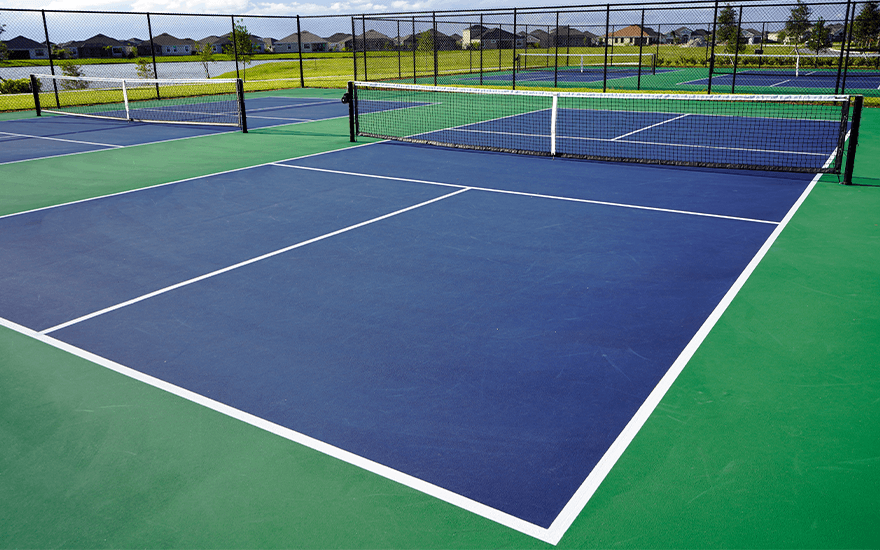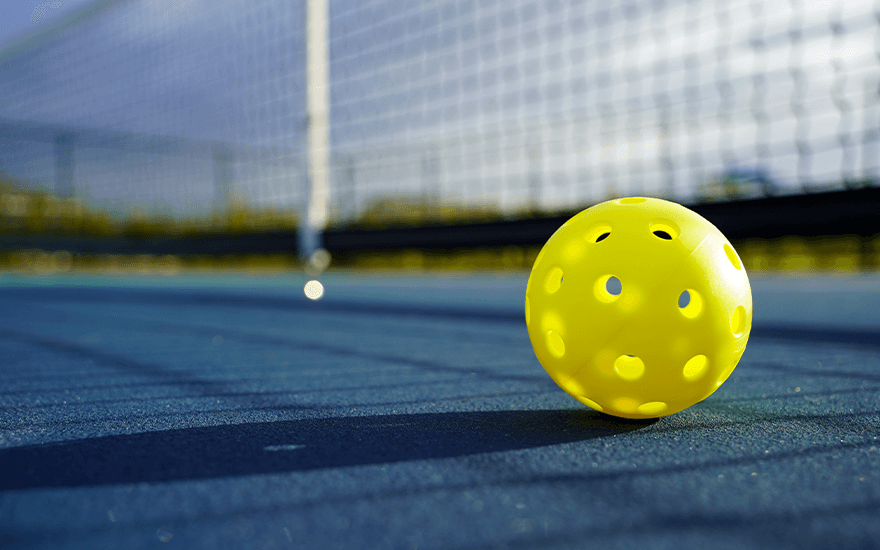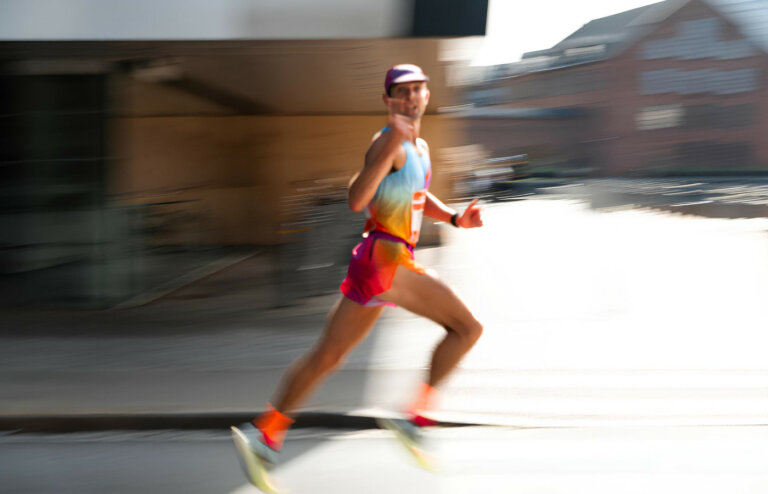John McEnroe is not happy. He bellows, “She called it, man!” to his opponent, Andre Aggasi after a miscommunication leads to a startled umpire stepping in to get involved.
McEnroe’s appeals are heard, and the game soon continues. “This is the first argument I’ve won in 40 years” receives a warm and ironic-tinged reaction from the spectators.
This is not Wimbledon. This is not their third and final meeting in the 1989 World Championship Tennis Finals inside a rapturous Reunion Arena in Dallas.
This is not even Tennis.
This is Pickleball, the fastest-growing sport in the United States, and the scene is being played out at the Seminole Hard Rock Hotel and Casino in Hollywood, Florida.
McEnroe would go on to defeat Agassi 15-13, 16-14 in their single-match duel before fellow former court legends Andy Roddick and Michael Chang went head to head, with the former coming out on top.
The inaugural event for the rising star of sports in the country was eventually won by Aggasi and Roddick in a doubles match, with the iconic duo collecting a $1 million purse.
Without prior knowledge of the event, it almost sounds too far-fetched to be true, echoing a fever dream for long-term Tennis fans.
But this may just be the start of Pickleball’s world domination.
Three men bored kids and a dog called Pickles.
Travel up the northwestern coast of Washington, navigating through a complex system of interconnected marine waterways and basins, and you will eventually come across Puget Sound.
There lies the island of Bainbridge, which can be credited as the birthplace of Pickleball. Described as a vibrant, diverse community rich in history, culture, and natural beauty, the island is characterized by an irregular 53-mile coastline with bluffs, lagoons, spits and tombolos.
On a hot summer day in 1965, the island brimmed with local Seattleites looking for a break from the city hum, all taking the 35-minute hop from the mainland.
The families of Joel Prichard and Bill Bell joined forces for their vacation, opting to spend their days on Pleasant Beach at the south end of the island. When their kids could no longer entertain themselves, cries of boredom and lack of activity crept in.
That prompted Prichard – a congressman from the state of Washington – to examine the tools at his disposal in an attempt to appease the children’s growing frustrations. Upon returning from a round of golf with Bell, he found that he had a badminton net and court, ping pong paddles, and a perforated plastic ball, similar to a Wiffle ball.

Prichard’s efforts started with a whimper. The shuttlecock used in badminton proved too light for the windy conditions. Ping-pong didn’t fare well either, with the ball consistently flying off the end of the table.
In a final hoorah, Prichard and Bell – a successful businessman – used the plastic ball and positioned the net at the badminton height of 60 inches before volleying the ball back and forth. As the weekend went on, they found the ball bounced well on the asphalt surface and lowered the net to 36 inches, using paddles made from plywood from a nearby shed.
At that moment, unbeknown to them, they had invented a sport that would skyrocket in popularity as the 21st century progressed. Pickleball, named after Prichard’s dog – not surprisingly called Pickles – who would regularly chase after the ball and hide it in the bushes, would become a big hit within the Bainbridge Island community.
A week later, Barney McCallum – who lived three doors down from Pritchard – was introduced to Pickleball. After the trio discussed initial ideas, they all agreed the game had so much potential that they needed to formalize it. So, when they created a set of competitive rules for the game – heavily influenced by badminton – the wheels truly started to kick into motion.
On February 13, 1968, Pritchard and several others filed articles for Pickle Ball, Inc.. This new corporation was “to develop the game of Pickle Ball and to sell and promote said game lawfully.”
Without a paddle
Some locals installed courts specifically for pickleball at their homes in the late 1960s, with the people in the Pacific Northwest hooked on the newly invented game, simple in design but with imagination and love behind it.
At this time, players were still using modified ping pong paddles which regularly would break during play, prompting the first official paddle to be constructed in 1967. Created in Bob O’Brian’s backyard, who was another friend of Pritchard’s, McCallum was the architect behind the design.
In addition to being one of the founders, McCallum – who passed away in December 2019 – was the doer and manufacturer of Pickleball. His work on the first paddle, aptly named the McCallum 1 or ‘M1’, prompted a demand for more designs and styles, and, as the sport grew, Pickleball evolved from a fun recreational family game to a business.
As the game started to gain steam, a corporation named Pickleball, Inc. was founded in 1972 to help interested players buy equipment to play the game. This included paddles, nets, and balls not taken from other racquet games but created specifically for pickleball.
By 1975, an article on pickleball was published in the National Observer before the headline ‘America’s newest racquet sport’ was slapped on the pages of a 1976 edition of Tennis Magazine.
That same year, the first known tournament in the world was held at South Center Athletic Club in Tukwila, Washington, with a large proportion of participants knowing little to nothing about the sport. A collection of players – many of whom were college tennis players – practiced with large wood paddles and a softball-sized wiffle ball before taking to the court.
David Lester won Men’s Singles, with Steve Paranto claiming second place. Paranto would go on to be inducted into the Pickleball Hall of Fame in 2019, courtesy of his pioneering work, which created a better, more balanced and lightweight paddle.
In 1984, Paranto’s father, Arlen, used his employment at Boeing to great effect, purchasing lightweight panels from the company’s surplus store. He used the material to construct the first lightweight paddle before forming a company that created a line of similar products.

Within a few short years after the introduction of Pro-Lite paddles, almost all pickleball players in the Pacific Northwest were using them in competition. By 2018, over 100 companies were making composite paddles. Almost all mirrored the construction model of the original Pro-Lite paddles.
The creation of the first lightweight paddle coincided with the birth of the United States Amateur Pickleball Association in March of 1984, along with the first officially published rulebook. Founded by enthusiasts Sid Williams and Bryon Olson, the pair made the outlandish decision to make the first honorary member of the organization, Ronald Reagan.
The then-president was even sent a pickleball set to the White House. No one – apart from Reagan – knows if he used it.
Even if Reagan didn’t buy into the sport, the rest of America did. By 1990, all 50 U.S. states were playing the sport. What began as two fathers trying to keep their kids from spiraling into boredom had now become a countrywide phenomenon.
Primetime viewing or selling the soul?
A lot has changed within the world of pickleball today. The sport has experienced a meteoric rise in popularity in the last three years, with participation rising an average of 158.6%.
Today, it is the fastest-growing sport in America over that period.
But, there are three noticeable absentees. In 2019, McCallum became the last living founder of Pickleball to pass. Pritchard died in 1997 at the age of 72, while Bell passed away in 2006 at the age of 83.
The trio left a legacy that they would be proud of today, given the publicity pickleball is now attracting. “We had no purpose. Nobody said, ‘Let’s sit down and make this game. There was no conversation like that – it was strictly for our own pleasure,” said McCallum in a 2015 interview.
The game has traveled from the sands of Pleasant Beach to the major broadcast networks and is now the official state sport of the State of Washington. That would not have been possible without the intuition and creativity of pickleball’s legendary triple threat.
What started out as three has become around 36.5 million, the number of pickleball players in the United States, according to new data released in January 2023. There are also almost 9,500 places to play, with more than 38,000 pickleball courts across the globe.
“You will find the pickleball craze is alive and well, still the fastest-growing sport in the United States,” said President and CEO of the SFIA, Tom Cove. The speed of growth is frightening, with a player increase of 187% between 2017 and 2022, while the pickleball paddle market size was at around $152.8 million in 2021.
That number is forecasted to grow at a rate of 7.7% by 2028. Unsurprisingly, the big hitters of the media and entertainment industry came knocking. ESPN announced they would broadcast the inaugural Pickleball Slam to a national audience, with the tournament produced by Horizon Sports and Experiences.
The Slam was inspired by The Match golf series, which has featured the likes of Tom Brady, Peyton Manning, Tiger Woods and Patrick Mahomes.
“What I was thinking was let’s take the concept of The Match, which I did at Turner back in 2018,” said Horizon co-CEO David Levy.
“Thinking about that from a pickleball perspective, we said, ‘Wait a minute, it’s the fastest-growing sport in the U.S., so let’s take the best racquet player brand names in the world—McEnroe, Roddick, Agassi and Chang—and put them in a $1M purse live at the Hard Rock Casino. Today, right now, nobody truly knows the top pickleball players. No one can even name maybe the top 50 pickleball players, but it’s a huge rising phenomenon in sport. And we decided to jump in, in a unique way.”
Trash talk and controversy surrounded one of its star quartet in the build-up, with McEnroe publically saying, “If I Hear one more time that pickleball is the fastest-growing sport, I’m gonna throw up” and that “it’s hard to imagine something small like pickleball being great on TV.”
Former player Rennae Stubbs once remarked that she would rather watch paint dry than waste her time on pickleball. She recently called out McEnroe and others for promoting pickleball, saying they were only interested in money and didn’t like the sport.
Question marks were raised around the motive of the organizers and the four former tennis stars, all of who have tenuous links to the sport, with money widely being branded as the main motivator.
However, it’s evident that the world’s best pickleball players would not attract the same level of hype and viewing figures. While the likes of Anna Leigh Waters and Collin Johns are household names for followers of the sport, they don’t have the pulling power of Mcenroe, Aggasi, Roddick and Chang.
Nearly 3000 attended the event, which will no doubt increase the sport’s participation and notoriety. Ultimately, that’s what is required if the true elite of pickleball is to get their time in the spotlight.
Levy sees the event as the start, citing that he wants the Williams sisters, Roger Federer and Rafael Nadal, to feature in future editions.
So, what does the future hold for pickleball? Will it sit alongside the elite of sporting primetime, or will its modest and humble roots on Bainbridge Island keep it grounded?
We will leave the final word to Aggasi.
“I never thought I was gonna say this, but I am playing this as long as I can walk. I can’t wait to get back out there. Pickleball is where tennis players go to die.”






